In 1991 Intel found itself in a relatively uncomfortable position, at least when it comes to the bottom end of the market. The main competitor – AMD has won a series of legal battles and was about to repeat what happened in 286 days -flood the market with cloned 386 chips which were cheaper and clocked higher than Intel offerings. At the same time uptake of the 486 flagship was still relatively slow, mainly due to the very high cost of the 486 chip.
Thus, in April 1991, Intel launched the 486SX. A 20 MHz chip that was identical to the 486 (now rebranded as 486DX) except for the missing (or disabled) FPU. This proved to be a very decent trade-off considering how relatively unimportant the FPU unit was for the majority of software in the early 90s. Compared to the 80386, the 80486 architecture was a monster. Its 8k L1 cache, pipelined architecture and numerous optimisations reducing the number of clock cycles required to complete instruction justified claims about double performance per clock compared to the 80386 architecture.
At the time of launch, the 486SX-20 was priced aggressively – cheaper ($258) than Am386DX-40 CPU ($390) which was a recipe for success for its strategy to accelerate the industry’s move from 386 to 486 platform.
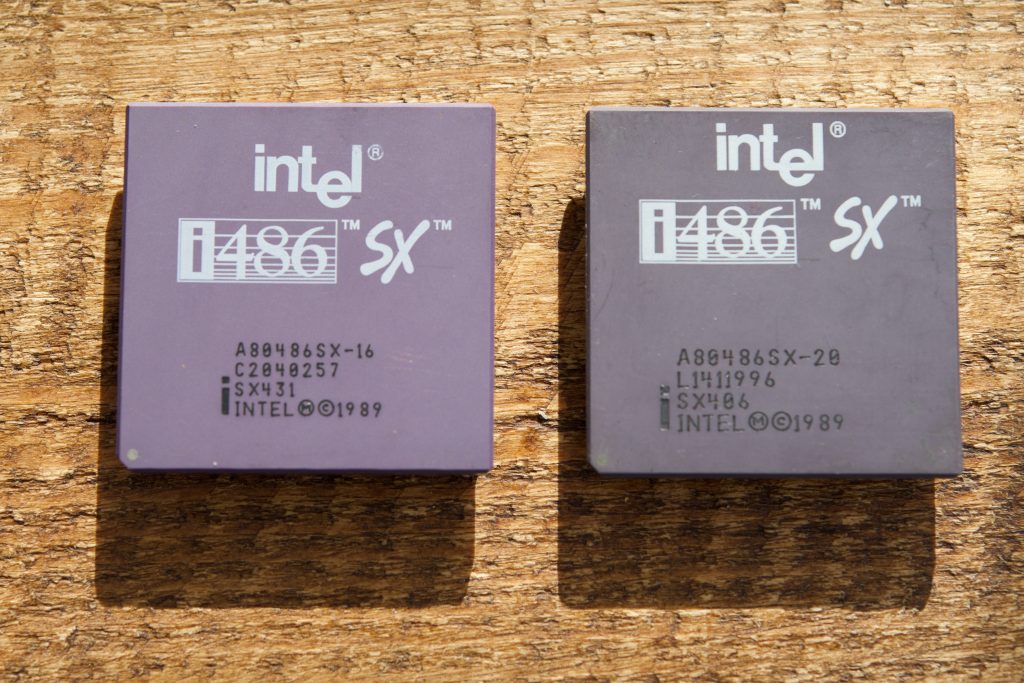
In October 1991 Intel added two new additions to the line-up. 486SX chips clocked at 16 and 25 MHz. The former was proposed as an OEM solution to allow for cheaper entry-level 486 systems. There were rumours that Intel even offered a 12 MHz version to certain vendors but there is no evidence that such a chip ever existed.
Having such a big difference in clock speed difference raises an interesting question. How do those low-end 486SX chips compare against fastest 386 offerings – 386DX-33 and 386DX-40. Let’s find out.
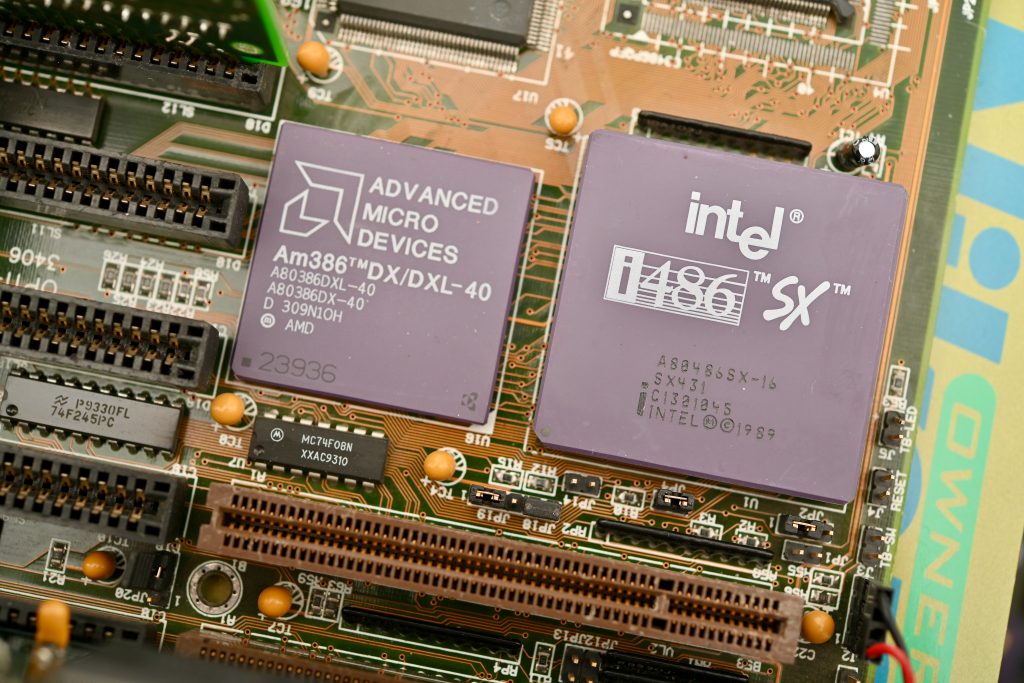
First of all, finding a system that supports 16 MHz is harder than one would think. Unless you actually own one of the OEM PC the 486SX-16 was designed for then it is hard to find a suitable motherboard. Very few generic motherboards declare support for 20 MHz, let alone 16 MHz. The best bet is to use one of the earlier boards that uses an oscillator rather than a clock generator or look into data-sheets for undocumented clock generator settings. Even when you manage to configure the clock generators there could be issues. Unless the board uses a fixed frequency, the fastest AT-BUS clock divider is often 1:3. Thus there could be issues with DMA speeds or other issues related to a slow AT-Bus clock (such as a non-working keyboard). However, I managed to set it up even on a single 386/486 motherboard which allows for unique direct comparison.
The EXP3406 motherboard manufactured in 1992 I used for my test, might be convenient but isn’t the ideal test platform neither for 386’s nor for 486’s. Its chipset – OPTi 496XLC is relatively slow when it comes to memory and L2 cache speed. Both to 386DX as well as 486SX standards. However, sharing the same motherboard makes this test a somewhat fair comparison.
What’s fair today isn’t necessarily realistic from the historical point of view. Very few 386 systems had VL-Bus slots or 256kB of L2 cache – something that would naturally create a big advantage for 486 SX when compared to contemporary 386DX systems where VL-Bus or large L2 cache wasn’t uncommon. On the other hand, VL-Bus ticking at 16 MHz is not as big a help as the one at let’s say 33 MHz and many low-end systems even in 1992 shipped with ISA bus. However, one might say that creating this equal environment benefits the 386 CPU slightly more than the 486SX.
As for other components shared by both CPUs, I fitted 256kB of cache, Tseng ET4000 W32p VL-Bus VGA card, 16MB RAM and Adaptec AHA-2842 VL-Bus controller.
The system worked without RAM wait-states and L2 Cache was configured to use 3-1-1-1 access cycle in the 486 mode and 1 WS in the 386 mode which was the best I could achieve on my motherboard.
DOS Graphics Benchmarks
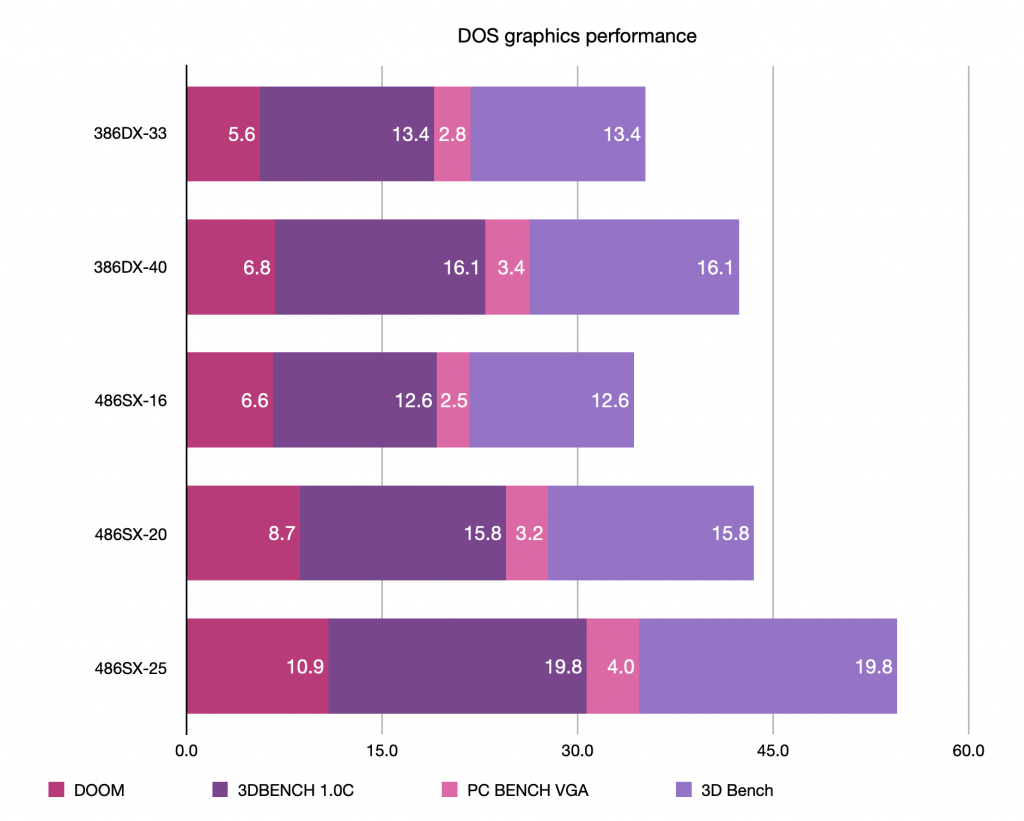
DOS Synthetic CPU Tests
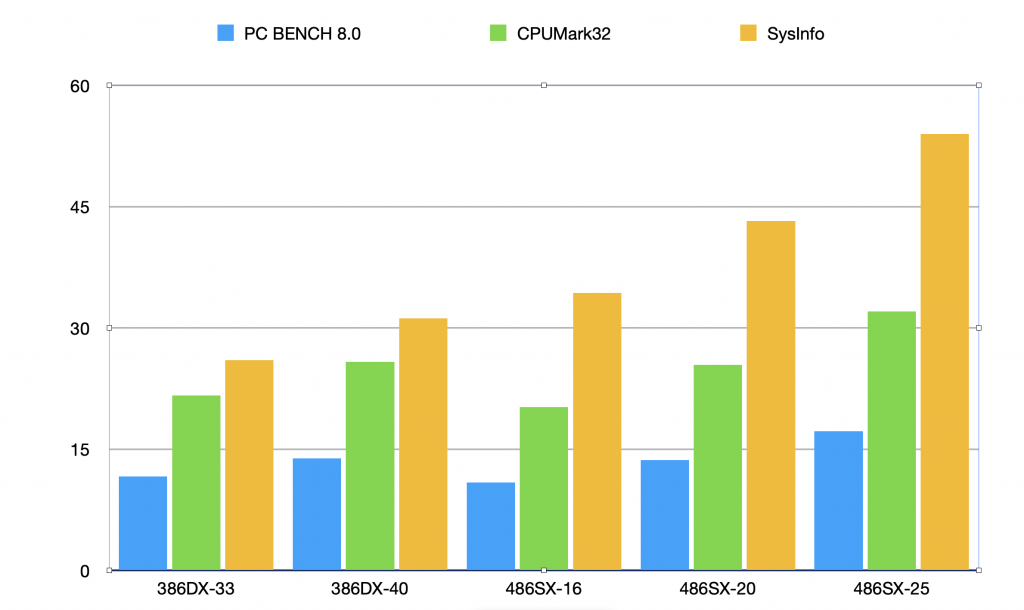
Windows Performance
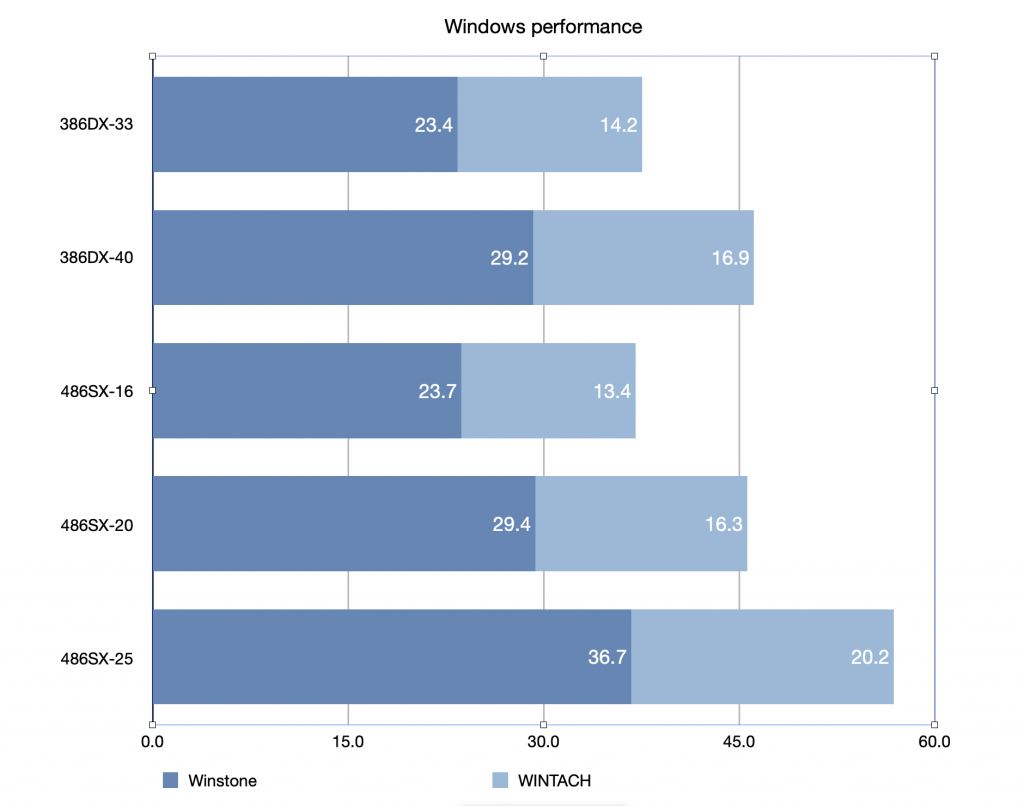
Conclusion
Despite its advanced features the 486SX-16 MHz simply cannot compete with the 386DX running at 40 MHz. The difference in clock speed and memory bandwidth is just too big. The 486SX chip starves for revolutions to feed its internals utilised. The fight gets much closer when competing against the 386DX-33 chip but even that managed to pull ahead in many tests.
The 486SX-20 MHz fared better. It easily beat the 386DX-33 and fought an even battle with the 386DX-40 while winning in all-important DOOM and Winstone tests. Clearly, the relatively small difference in bus bandwidth compared to 16 MHz helps a lot.
Another step up to 486SX-25 and here we have a CPU that doesn’t have a problem winning against any 386DX in whatever you throw at it.
However, without splitting hairs one could say that the 486SX-16 is roughly equal to 386DX-33 and the same can be said for 486SX-20 and 386DX-40.
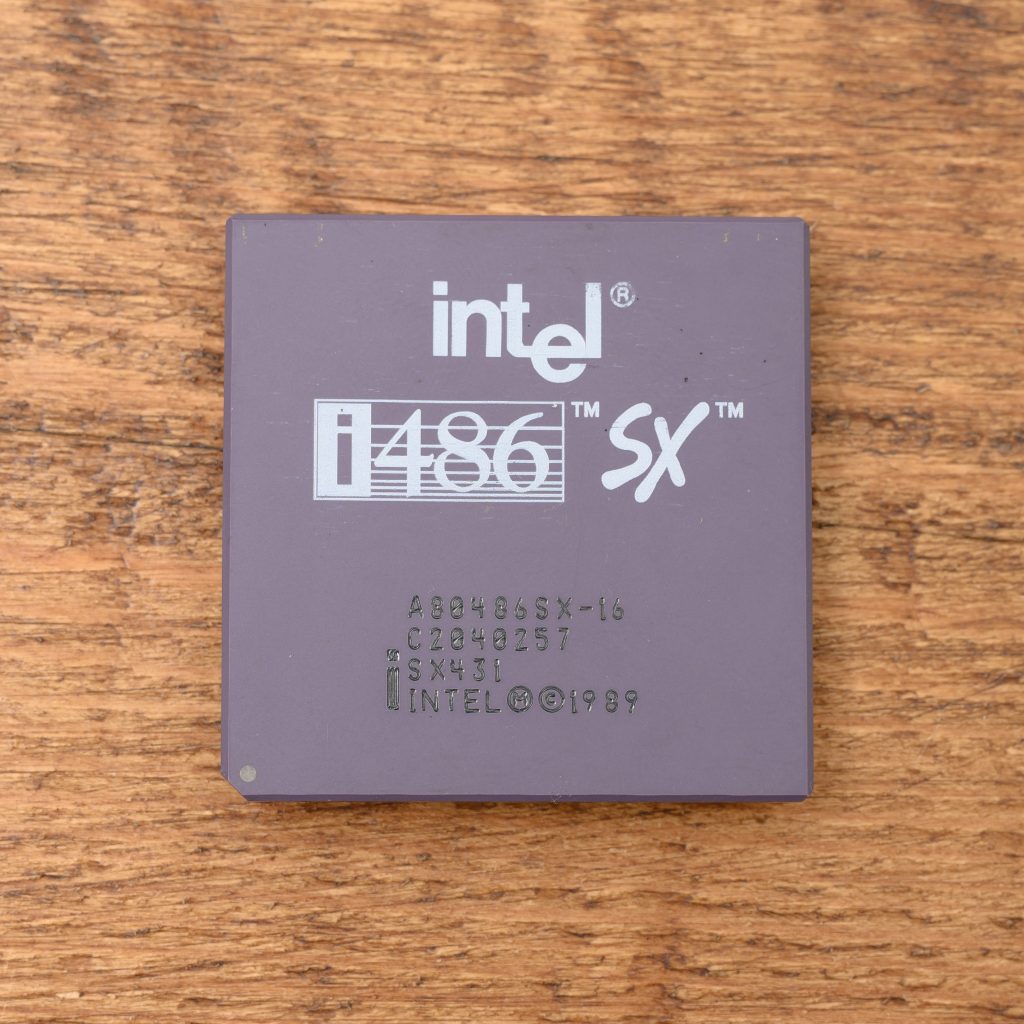
Fantastic comparison, well done! Doom really likes the 486
Wow! Super interesting and satisfying! THANK YOU!
Right on! It’s great to see these comparisons alive since I remember all these chips when they came out and we had some crowdsourced based knowledge about the relative speeds, but I can’t ever recall a comparison like this back then. Great work!
Woahou
Thx.
Sure, I Wwill leave my 286 for a 486SX. 33?